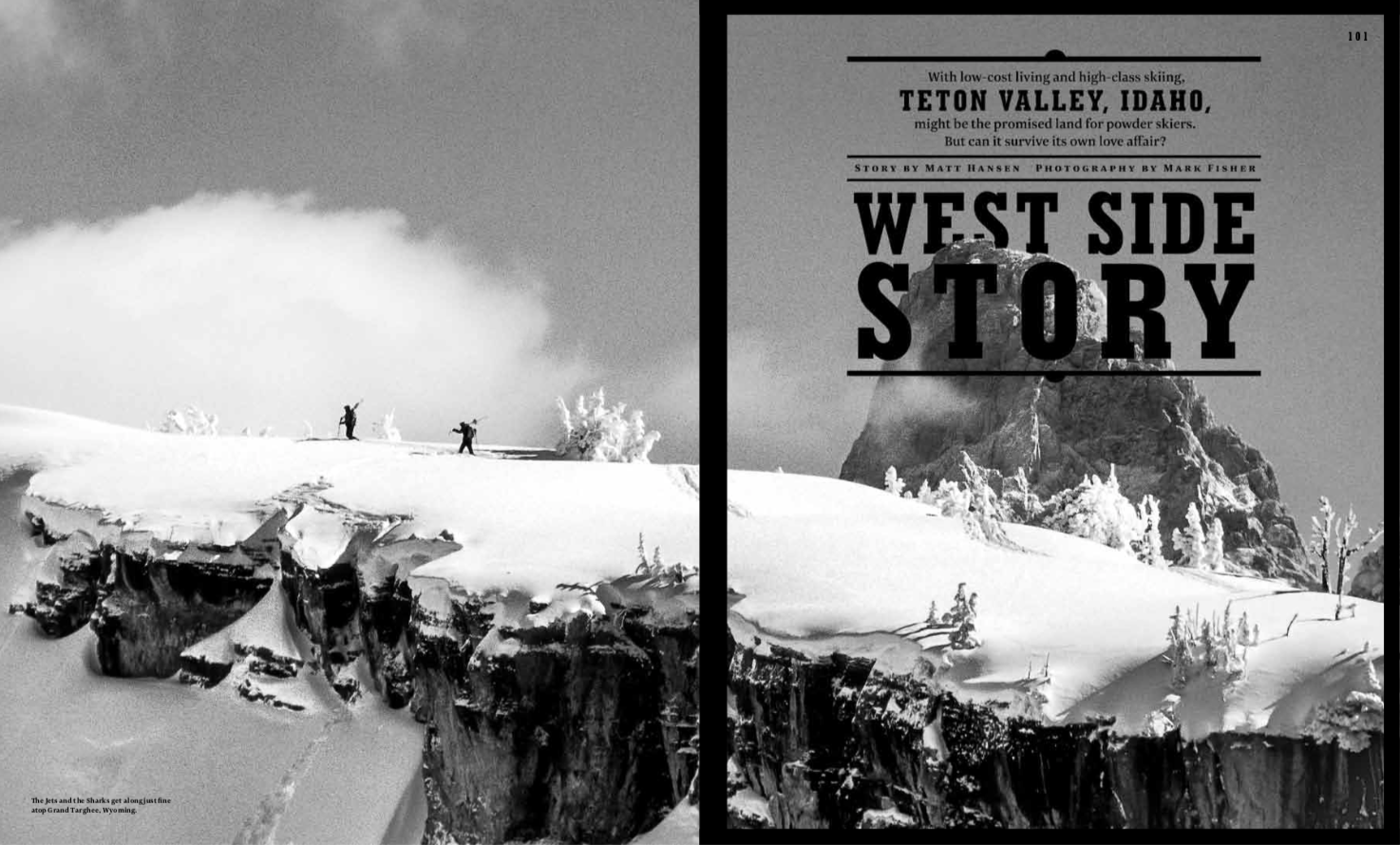
Feature Writing
The Quiet Place, from Powder’s November 2018 issue.

In “The Quiet Place,” from Powder’s November 2018 issue, I wanted to explore how skiing enables one to find silence in a world with too much noise. But in looking through the lens of skier and guide Beau Fredlund, who lives in Cooke City, Montana, I also tried to find answers about whether seeking solitude in the wilderness is a search…or an escape.

We often associate skiing with big mountains and remote towns on the edge of wilderness. But the skiing spirit lives on in the unlikeliest of places thanks to people like Richie Fredericks, a longtime sales rep on the East Coast. In “The Hustle,” I meet Richie at his home in Ocean City, New Jersey, and we hit the road to Snowshoe, West Virginia, where he hopes to solidify key accounts that will make or break his year. Selling skis for more than 40 years, Richie sometimes travels 200 miles between accounts to get valuable face time with local skiers. As his friend would tell me, “People think being a sales rep is sexy. But sometimes, the cruise is a lot different than the brochure.” Photo: Alexa Miller

“The Grand Scale” is a story about how Grand Teton National Park has become skiing’s greatest treasure. After growing up skiing in the Wasatch and seeing how that range has become diced up by numerous and often competing interests, I am constantly reminded of how lucky we all are that decades ago visionaries fought to preserve the Tetons—often described as the perfect “skier’s mountain range”—in perpetuity.

The Skier’s Chalet, in Aspen, is a reminder of the deep skiing heritage of America’s best ski town. But this story, viewed through the eyes of the ski bums living at the Chalet, is about the importance of friends, the lack of affordable housing, and why ski towns need to prioritize community over profit. As of March 2019, however, Aspen is getting ready to redevelop the entire Chalet neighborhood, leaving its tenants’ futures up in the air.

“The End Game” seeks answers to some of modern skiing’s most difficult questions. What are the pressures and incentives of social media? How does one stay relevant and at the top of his or her game despite the ever-increasing risks? When an athlete dies, where does the accountability lie: the media, brand sponsors, the athletes themselves? I really disliked writing this story, but felt it was important in the wake of troubling trends in the outdoor world, where it seemed everyone—ski magazines included—were capitalizing off of tragic loss.

Teton Valley, Idaho, has long been known as the “quiet side of the Tetons.” But as more people discover its affordable living with quick access to some of the best powder skiing on the planet, the community grapples with how to preserve what made it so special in the first place. The “West Side Story” appeared in Powder in 2012. Photo: Mark Fisher

By the end of this century’s first decade, it was clear that skiing had a serious problem. During its rapid, almost breathless evolution from the skinny-ski era, the sport’s best skiers were dying at an alarming rate. With new technology, skiing became easier than ever before, allowing all of us to push boundaries. That in turn pushed elite athletes even further onto a razor-thin edge, where the margin for error was non-existent.

“Chouca” traces the steep skiing history and culture in Chamonix, and introduces a new generation making its mark on the birthplace of alpinism. For about 10 days, I skied around the Mont Blanc massif with Nate Wallace and Yan Andre, learning their ways and interviewing first-descent pioneers Yves Detry and Pierre Tardivel. As Wallace told me, “We don’t ski in Chamonix to die. We ski in Chamonix to live.” From Powder Magazine’s December 2007 issue.

In March 2006, I hitchhiked with my skis from Breckenridge to Telluride, mostly alone. I hit a half dozen ski areas along the way, and met all kinds of people, sleeping on their floors and skiing with them during the day. To this day it was one of the most memorable experiences in my career. “The Hitcher” appeared in Powder’s September 2006 issue. Photo: David Reddick

“Fractured” takes a deep look at the emerging philosophy of human factors in avalanches. In the winter of 2004-05, this was a rather new concept gaining traction in the field of snow safety. Professionals were increasingly alarmed that most of the people dying in avalanches weren’t beginners, but rather seasoned skiers with at least some knowledge of avalanche hazards. Today, human factors and decision-making are key components to every level 1 avalanche class. The people on this opening spread represent all those skiers and snowboarders who died that winter in avalanches. As a person and skier, I was forever changed by their stories. From Powder’s December 2005 issue.
